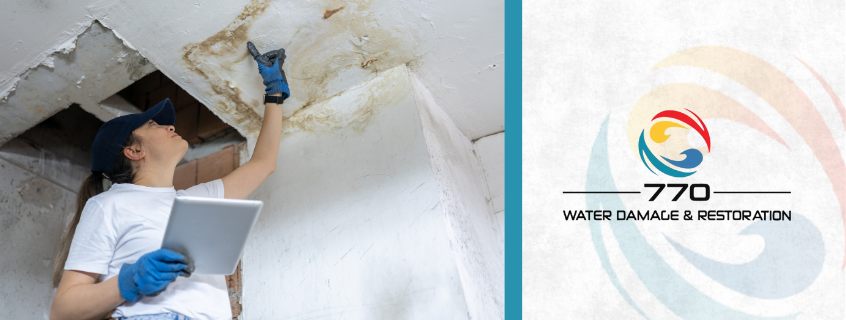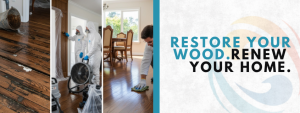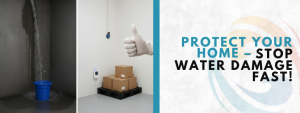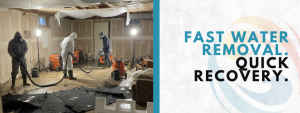
You might think your home is your safest space. It’s cozy, warm, and familiar. But what if I told you that right behind your walls and beneath your floors, invisible threats are quietly growing? From silent mold colonies to sneaky asbestos fibers, your home might be hiding secrets you never expected.
Many people don’t realize it, but the health hazards lurking in your walls can become serious problems if ignored. That smell in the basement? That odd discoloration on the ceiling? Those might not be just harmless signs of age—they could be warnings. Let’s walk through these unseen risks and learn how to spot, understand, and handle them before they affect your family’s health.
Understanding the Health Hazards Lurking in Your Walls
Let’s start with what these hidden dangers are. Most of the time, we can’t see or even smell them—until it’s too late. You might have heard of mold and mildew, but there’s more:
List of common hidden threats in your home:
- Mold & Mildew: Thrive in dark, damp areas, usually behind walls and under floors.
- Asbestos: Found in old floor tiles, pipe insulation, and even popcorn ceilings.
- Lead Paint: Houses built before 1978 often used it, and it’s toxic if disturbed.
- Pest Droppings: Rodents and insects leave behind waste in walls that may carry diseases.
- Formaldehyde: A chemical used in glues, pressed wood, and some insulation materials.
- Dust Mites: They don’t bite, but their presence can trigger asthma and allergies.
If any of this sounds alarming, you’re not alone. Most homeowners are shocked to learn that the health hazards lurking in their walls could be putting their family at risk, without a single sign on the surface.
Mold: A Silent But Serious Health Risk
Mold is one of the most dangerous and common issues inside homes. It can start from something as simple as a small water leak. Once mold spores find moisture, they settle in and spread rapidly. But they don’t just look or smell bad—they can hurt your health.
How mold can affect you:
- Constant sneezing or a runny nose
- Trouble breathing
- Skin rashes
- Long-term asthma complications
Mold loves growing behind bathroom tiles, underneath hardwood floors, and inside insulation. These are places you never check—but the health hazards lurking in your walls are often right there, hidden in plain sight.
If your home had a recent leak or flood, it’s critical to get professional restoration services immediately. Time is key. Mold can start forming in just 24-48 hours after water exposure.
Asbestos: The Hidden Killer in Older Homes
Asbestos used to be everywhere. It was fire-resistant, durable, and used in all kinds of building materials until the 1980s. But it’s also extremely dangerous when disturbed. Once fibers get into the air and you breathe them in, they can stay lodged in your lungs for decades.
Health problems caused by asbestos:
- Mesothelioma (a rare cancer)
- Lung cancer
- Asbestosis (lung scarring and stiffness)
- Chronic breathing difficulties
You may never notice anything until years later. That’s what makes asbestos one of the most dangerous health hazards lurking in your walls. If your home was built before 1985, it’s smart to get an inspection before doing any renovations.
Lead Paint: A Hidden Threat to Children
Lead paint doesn’t just flake—it can poison. If ingested or inhaled, even small amounts can cause developmental issues in children. It’s especially dangerous in older homes where paint has cracked or is peeling.
Symptoms of lead exposure in kids:
- Learning disabilities
- Irritability
- Slowed growth
- Behavior issues
Dust from lead paint can easily travel through HVAC systems or settle into carpet fibers. That’s why this health hazard lurking in your walls shouldn’t be overlooked. If you’re unsure, test your paint, especially in homes built before 1978.
Rodents and Insects: Tiny Guests with Big Health Consequences
Ever heard scurrying sounds in your attic or walls? It’s not just annoying—it’s unhealthy. Rodents and insects can chew through insulation and wires, but their real damage lies in what they leave behind.
What they spread:
- Hantavirus (from mouse droppings)
- Salmonella (from cockroach waste)
- Fleas and ticks (from nesting animals)
Once they make a nest inside your walls or floorboards, getting rid of them isn’t simple. And their droppings dry and become airborne, carrying bacteria and allergens that lead to serious breathing problems.
So, next time you hear movement in the walls, remember: these health hazards lurking in your walls don’t need an invitation. They come in unannounced—and stay hidden for a long time.
Formaldehyde: A Gas You Can’t See or Smell
Formaldehyde is found in many modern homes, often without homeowners realizing it. It’s used in composite wood products, glues, and insulation. Over time, it leaks into the air as gas.
Possible symptoms of formaldehyde exposure:
- Sore throat
- Burning eyes
- Skin irritation
- Nausea and headaches
This health hazard lurking in your walls is hard to detect unless you’re testing your air quality. That’s why installing air purifiers and choosing non-toxic building materials during home upgrades is so important.
How Water Damage Triggers Hidden Hazards
Water damage isn’t just about wet carpets. It’s the gateway for almost every hidden danger inside your walls and under your floors. A small pipe leak, roof drip, or basement flood could cause big trouble down the line.
Consequences of untreated water damage:
- Warped floorboards
- Mold inside the drywall
- Termite infestations
- Weakened structural wood
- Electrical short circuits
Each of these issues can breed more problems. Many homeowners only realize the issue months later, when mold starts appearing or health symptoms worsen. It’s always best to call experts for inspection and cleanup as soon as you suspect any water-related problem.
Warning Signs You Should Never Ignore
You don’t need to tear down your walls to know something’s wrong. Your home often gives clues if there’s a problem behind the surface.
Top red flags to look out for:
- Musty smell even after cleaning
- Bubbling paint or wallpaper
- Frequent allergy flare-ups indoors
- Warped wooden floors or cracking tiles
- New dark spots on ceilings or walls
These might seem like small inconveniences, but they could be signs of serious health hazards lurking in your walls. Never dismiss these red flags. Trust your nose and your instincts.
Health Conditions Linked to Poor Indoor Environments
When invisible threats take over your home, they don’t just stay in your walls. They make their way into your body too. You might not immediately feel sick, but over time, the damage builds.
Diseases linked to poor indoor air quality:
| Health Problem | Possible Cause Hidden in Home |
| Asthma | Mold spores, dust mites |
| Chronic Fatigue | Formaldehyde, VOC exposure |
| Coughing & Throat Irritation | Airborne mold, pest droppings |
| Skin Rashes | Contact with mold or old insulation |
| Memory Problems | Long-term exposure to lead |
The reality is that many of us live with these health hazards lurking in our walls for years without knowing why we feel tired, dizzy, or constantly sick.
Steps to Protect Your Home and Family
Quick Action Plan:
- Schedule a home inspection – Especially if your home is older than 30 years.
- Fix all leaks promptly – Water is the number one trigger for hidden hazards.
- Improve ventilation – Use exhaust fans in bathrooms and kitchens.
- Install air purifiers, especially those with HEPA filters that capture airborne toxins.
- Remove carpeting in damp areas – Mold loves wet carpets.
- Test for lead and asbestos – Before starting any remodeling project.
- Monitor your family’s health – Unusual symptoms at home might be a clue.
A proactive approach can make all the difference. The health hazards lurking in your walls don’t stand a chance when you take the right steps early.
Final Thoughts: Your Home Should Be a Safe Place
Your home is where your family grows, where kids play, and where you rest. It should feel safe—and be safe. But sometimes, the biggest threats are the ones we can’t see. From dangerous molds to toxic chemicals, these invisible invaders hide in places we rarely look.
Taking the time to understand and fix these problems isn’t just good for your house—it’s good for your health. The health hazards lurking in your walls may be silent, but they can have loud consequences if left unchecked.So if you’ve seen signs of water damage, heard strange noises in the attic, or just feel like something’s off, don’t wait. You can avoid costly repairs and protect your family by having your home inspected and cleaned by trusted professionals.
Frequently Asked Questions About Hidden Home Health Hazards
How can I tell if there’s mold behind my walls or under the floors?
If you notice a musty smell, constant indoor allergies, or bubbling paint, mold could be growing out of sight. A professional inspection is the best way to confirm and locate hidden mold.
What should I do if my home had a recent leak or flood?
Act quickly by drying the area and contacting restoration specialists to prevent mold growth and structural damage. Delaying cleanup increases the risk of health hazards lurking in your walls.
Is it safe to live in a house built before 1980?
Older homes can be safe if properly maintained, but materials like lead paint and asbestos may still be present. Testing and professional removal are recommended before renovations.
Are the symptoms I’m experiencing related to my home’s air quality?
If symptoms like coughing, fatigue, or allergies improve when you leave home, poor indoor air quality could be the cause. Hidden mold, pests, or chemicals may be to blame.
Can I fix hidden health hazards in my home myself?
Some surface issues can be managed, but most hidden dangers require expert tools and knowledge. It’s safest to consult trained professionals for inspection and remediation.






